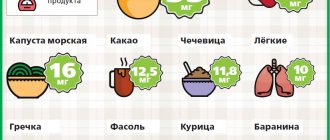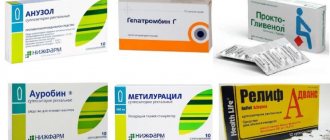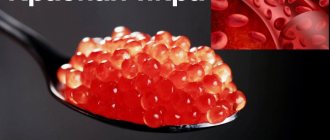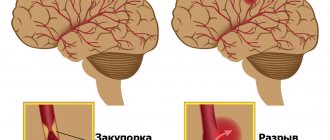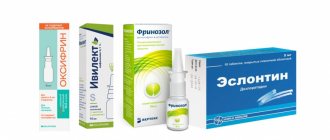Introduction
Diseases of the cardiovascular system (CVD) are the leading cause of premature death and loss of years of life.
The most common diseases are coronary artery disease, ischemic stroke, and peripheral artery disease [1, 2]. The development of dyslipidemias may be caused by other diseases (secondary dyslipidemias) or a combination of hereditary predisposition and adverse environmental factors. Prevention and treatment of dyslipidemia are considered within the framework of preventing the development of cardiovascular diseases - CVD [3]. In addition to elevated total cholesterol (TC) and low-density lipoprotein (LDL) levels, some other types of dyslipidemia also increase the risk of developing CVD. The most common is a certain combination called the atherogenic lipid triad. This triad includes an increase in very low-density lipoprotein (VLDL) remnants, which is manifested by a moderate increase in triglycerides (TG), an increase in small LDL particles, and a decrease in high-density lipoprotein (HDL) levels. Data from clinical studies aimed at assessing the effectiveness and safety of influencing these factors to reduce the risk of CVD are limited. Therefore, this triad and its individual components should be considered as additional targets for the prevention of CVD diseases.
When prescribing drug therapy, the greatest attention should be paid to reducing the level of TC and LDL, which can be influenced by changing the patient’s lifestyle (reducing excess body weight, increasing the level of regular physical activity, anti-atherosclerotic diet, etc.). Therapy for lipid metabolism disorders is currently based on the degree of risk of a particular patient, identified using special tables [3]. The target LDL level in patients at high and very high risk is 1.8 mmol/L. Today, it is not enough to limit ourselves to achieving target levels only for LDL, it is also necessary to focus on target levels of non-HDL cholesterol, HDL and apo-B levels, especially for individuals with obesity, metabolic syndrome and type 2 diabetes mellitus. Prevention and treatment of dyslipidemia should be considered from the point of view of preventing the development of cardiovascular diseases.
The table shows comparative characteristics of drugs that correct blood lipid levels [4]:
Note. LDL - low-density lipoproteins, HDL - high-density lipoproteins, Apo LP - apolipoproteins, LP(a) - lipoprotein (a). ↑ – increase in level, ↓ – decrease in level, 0 – no effect (the number of crosses indicates the severity of the effect).
As can be seen from the table, statins and bile acid sequestrants have the strongest hypocholesterolemic effect. They are rightfully considered hypocholesterolemic drugs, although they can moderately affect HDL and TG levels. These drugs are prescribed for hypercholesterolemia and moderate hypertriglyceridemia.
Fibrates have a pronounced hypotriglyceridemic effect and a very moderate hypocholesterolemic effect. Therefore, they are prescribed for isolated and combined hypertriglyceridemia. Nicotinic acid combines equal hypocholesterolemic and hypotriglyceridemic activity. The drug quite significantly increases the concentration of HDL and lowers the level of Lp(a), so it is prescribed in cases of mixed hyper- and dyslipidemia. Cholesterol absorption inhibitors moderately reduce LDL levels and are mainly used for combination therapy. Fish oil preparations are used for hypertriglyceridemia and low HDL levels.
Thus, each group of drugs has its own niche in the spectrum of lipid disorders, but absolute importance in practice remains with statins due to the highest prevalence of hypercholesterolemia among the population.
What does fish oil contain? Why is it so useful?
Fish oil, which is so beneficial for the heart, blood vessels and brain, is rich in omega-3 fatty acids. They are a combination of eicosapentaenoic and docosahexaenoic acids. The benefits of these substances are due to the fact that they form cell membranes, thus participating in the functioning of all body systems.
Fish oil contains a large number of micronutrients. These are fluorine and bromine, as well as iodine and phosphorus. Among its components are vitamins and. Lipochromes play the role of antioxidants in fish oil. These fatty pigments reduce oxidative stress, thereby preventing premature aging of the body.
Omega-3 polyunsaturated fatty acids
In 1971, an article was published in the Lancet journal [5], which spoke about the lower content of atherogenic lipoprotein fractions in the blood plasma of Eskimos compared to continental Danes (the difference is statistically significant), which was explained by the peculiarities of the Eskimo diet, which contains a large amount of seafood in its composition. However, this message remained virtually unheeded.
Interest in omega-3 polyunsaturated fatty acids (ω-3 PUFAs) arose after the publication of the results of a Danish epidemiological study, in which the morbidity patterns of Greenlandic Eskimos and continental Danes were studied for 24 years (1950–1974, number of participants – 1800) [6]. It has been shown that Eskimos suffer little from myocardial infarction (MI), multifocal atherosclerosis, diabetes mellitus, thyrotoxicosis and psoriasis. These differences were associated with the nutritional habits of the Eskimos, since they consume large amounts of ω-3 PUFAs with food (13 g versus 1 g per day, respectively). These observations were subsequently confirmed by a number of large epidemiological studies, which traced and determined an inverse statistically significant correlation between the level of ω-3 PUFAs in the blood plasma and the risk of developing fatal and non-fatal MI.
For example, in the epidemiological study of the Honolula Health Program (observation period of 8006 Japanese people - 1963-1988), the effect of a diet rich in seafood (systematic consumption of fresh fish more than 2 times a week) on the risk of mortality from coronary heart disease (CHD) was investigated [ 7]. The results of this study indicated that individuals who systematically consume seafood rich in ω-3 PUFAs have a significantly lower risk of mortality from CHD (p < 0.01).
Another study provides data that long-term (20 years) daily consumption of fresh fish (30 g or more) reduces the risk of mortality from CHD by 40–50% [8].
Fatty acids are divided into three groups:
• Saturated fatty acids (lauric, myristic, palmitic and stearic). In their molecules, all carbon atoms are connected by single covalent bonds, and two bonds are replaced by hydrogen atoms. These acids are found in large quantities in coconut, palm, nutmeg oils, as well as in pork fat. A diet that includes these acids contributes to an increase in atherogenic lipoproteins in the blood plasma [9–11].
• Monounsaturated fatty acids (oleic, palmitooleic, elandic, etc.) have one double bond in their molecule. The human diet is dominated by oleic acid, which is found in large quantities in olive oil and peanuts. A diet rich in oleic acid helps reduce the level of anti-atherogenic HDL in the blood plasma.
• Polyunsaturated fatty acids – ω-3 and ω-6 PUFAs. There are several double bonds in the carbon chain of these acids, the number 3 indicating the position of the double bond farthest from the carboxyl group.
ω-3 PUFAs are classified into short-chain (γ-linolenic) and long-chain (eicosapentaenoic [EPA] and docosahexaenoic [DHA]).
Unsaturated fatty acids mainly come from food. There are three groups of unsaturated fatty acids depending on the carbon atom involved in the formation of the last double chain. The main ω-3 PUFAs include ENA and DHA.
ω-3 PUFAs improve endothelial function, reduce platelet aggregation and TG concentration in the blood, have an anti-inflammatory effect, affect the synthesis of eicosanoids, and increase the stability of atherosclerotic plaque [10, 12]. Ingestion of 23 g/day of fish oil (rich in long-chain ω-3 fatty acids) helps reduce TG levels by 25–30% in patients with normo- and hyperlipidemia. For CVD, fried fish prepared in public catering establishments (for example, restaurants and fast food outlets), as well as frozen processed fried fish, should be avoided, as they contain low amounts of ω-3 PUFAs and high amounts of trans fatty acids. Alpha-linoleic acid (a medium-chain ω-3 fatty acid found in chestnuts, some vegetables, and soybean and canola oils) is less effective at lowering TG levels. Long-chain ω-3 PUFAs also reduce the severity of the postprandial lipidemic response. When taken as a dietary supplement at a dose of 3 g/day, an increase in LDL-C levels of approximately 5% may be observed in some patients suffering from hypertriglyceridemia [13].
The source of ω-3 PUFAs can be either a diet rich in marine fish or dietary supplements. The amount of long-chain ω-3 PUFAs (EPA and DHA) consumed through food and/or nutritional supplements should be within 1 g/day [14]. The richest types of long-chain ω-3 PUFA are the following types of marine fish (in descending order): salmon, mackerel, herring, salmon, sardines, tuna and trout. For example, 100 g of salmon contains 18 g of ω-3 PUFA, of which 1.1 g is EPA, vitamin E – 0.3 mg, vitamin D – 6 mg.
It should be noted that heat treatment significantly changes the cis-configuration (geometric, spatial configuration) of ω-3 PUFA. Therefore, it is better to consume them lightly salted (3–5% brine). To maximize the preservation of ω-3 PUFAs, fish should be baked rather than fried. In boiled fish, the preservation of ω-3 PUFAs is slightly higher than in fried fish, but less than in baked fish.
It is preferable to consume fatty fish: anchovies (anchovies), carp, halibut, herring, trout, mackerel, salmon (salmon), striped sea bass, tuna, whitefish.
The role of omega-3 unsaturated acids in the prevention and treatment of various diseases
Part 2. Read the beginning of the article in No. 7, 2021.
Non-alcoholic fatty liver disease and non-alcoholic steatohepatitis
Omega-3 polyunsaturated fatty acids have been studied in patients with nonalcoholic fatty liver disease and nonalcoholic steatohepatitis because of their potential hypotriglyceridemic, insulin-sensitizing, and anti-inflammatory effects. Observational studies have shown that patients with non-alcoholic fatty liver disease have low plasma levels of ω-3 PUFA. Several preliminary studies on the effects of ω-3 PUFA supplementation on various aspects of nonalcoholic fatty liver disease and nonalcoholic steatohepatitis (biomarkers of liver damage, liver fat accumulation, and liver fibrosis) have shown some encouraging results. It is noted that the intake of ω-3 PUFAs can reduce radiological and histological indicators of liver steatosis and fibrosis in patients without cirrhosis. In addition, consumption of ω-3 PUFAs is inversely associated with the risk of hepatocellular carcinoma. One study included 442 nondiabetic patients in whom ω-3 PUFA supplementation significantly improved lipid profiles (decreased TG and total cholesterol and increased serum high-density lipoprotein cholesterol) and reduced plasma alanine aminotransferase levels, but with unclear results. implications for signs of steatosis and liver fibrosis and significant heterogeneity between studies. Similar results were also found in a meta-analysis of 4 randomized clinical trials that included 263 children and adolescents with non-alcoholic fatty liver disease. The results of this meta-analysis showed that ω-3 PUFA supplementation reduced hepatic steatosis as assessed by ultrasound and blood tests after at least 1 year of treatment [27, 28].
Application of ω-3 PUFAs in the treatment of inflammatory and dystrophic joint diseases
Omega-3 PUFAs are used in the treatment of inflammatory and dystrophic diseases of the joints - rheumatoid arthritis, osteoarthritis, reactive arthritis, etc. Omega-3 PUFAs are included in antirheumatic therapy in addition or in combination with other antirheumatic drugs. A combined preparation based on ω-3 PUFAs and plant extracts has received recognition from the European League Against Rheumatism (EULAR 2003, 2004, 2007) [29].
The anti-inflammatory effect of ω-3 PUFAs is due to a decrease in the production of pro-inflammatory eicosanoids (prostaglandin E2, leukotriene B4) from AA, an increase in the production of anti-inflammatory eicosanoids (prostaglandin E3, leukotriene B5), a decrease (due to suppression of the synthesis of leukotriene B4) in the production of platelet aggregation factor, interleukin- 1 and tumor necrosis factor, allows the use of ω-3 PUFAs in the treatment and prevention of various inflammatory diseases with an autoimmune and/or allergic component of pathogenesis, such as rheumatoid arthritis, systemic lupus erythematosus, Crohn's disease and ulcerative colitis, bronchial asthma and atopic dermatitis. For example, during a comparative study of the effectiveness of low doses of EPA and DCG (27 mg/kg and 18 mg/kg, respectively) in 20 patients with rheumatoid arthritis and higher doses (54 mg/kg and 36 mg/kg) in 17 patients, a pronounced reduction, compared with 12 patients in the control group who received olive oil capsules containing 6.8 g of oleic acid, in the number of patients who noted joint pain (at a low dose - by the 24th week and at a higher dose - by the 18th week week (p = 0.04)); the production of leukotriene B4 in neutrophils decreased by 19% at a low dose and by 20% at a higher dose (p = 0.03), while the production of interleukin-1b by macrophages in the control group decreased by 38.5% (not statistically significant), with when prescribing ω-3 PUFAs in small doses by 40.6% (p = 0.06) and when prescribing higher doses of ω-3 PUFAs - by 54.7% (p = 0.0005). A repeat trial attempted nonsteroidal anti-inflammatory drug (NSAID) withdrawal with fish oil and olive oil. In the main group, 8 weeks after discontinuation of diclofenac, patients did not experience a worsening of the disease compared to the control group receiving NSAIDs [30].
Treatment of autoimmune diseases
Because ω-3 PUFAs influence humoral as well as cellular immune factors, they have been used to treat autoimmune diseases. The effectiveness of complex therapy for systemic lupus erythematosus has been shown to increase when ω-3 PUFAs are included in its composition. A similar effect was obtained in the treatment of skin inflammatory and allergic diseases - atopic dermatitis and psoriasis. These studies found that in individuals with skin diseases, the level of arachidonic acid in affected tissues was 8 times higher than in healthy skin. The counteraction of ω-3 PUFAs to the proinflammatory effects of arachidonic acid metabolites (prostacyclin, leukotrienes, lipid peroxides, etc.) largely explains their therapeutic effect [31].
Renoprotective effect of ω-3 PUFA
The use of ω-3 PUFAs in patients with diabetic nephropathy helps reduce oxidative stress and has a positive effect on the condition of the kidneys. Preliminary data have been obtained on the possibility of reducing the rate of sclerosis of the glomerular apparatus in patients with chronic kidney pathology with the use of ω-3 PUFAs. It is possible that this drug may inhibit the progression of chronic renal failure in individuals with chronic kidney disease, which requires further study [32].
Application of ω-3 PUFAs in malignant neoplasms
The basis for studying the possibilities of using ω-3 PUFAs in malignant neoplasms were the results of a number of epidemiological studies that showed that women in Japan and Greenland have an extremely low incidence of breast cancer, which is most likely associated with diet. Traditionally, the diet of the inhabitants of Japan and Greenland includes large amounts of fish and seaweed containing ω-3 PUFAs. The results of subsequent studies revealed that the use of ω-3 PUFAs prevents the development, limits the growth and metastasis of breast cancer. In the mechanism of the protective effect of ω-3 acids against breast carcinogenesis, a decrease in the production of a number of arachidonic acid metabolites (prostaglandins E2 and F2, thromboxane A2), which are stimulators of tumor growth, is important. Along with the effect of ω-3 PUFAs on the synthesis of prostaglandins, a decrease in the immunoinhibitory effect of cortisol and a cytotoxic effect due to stimulation of peroxidation in tumor cell membranes are expected.
The inclusion of ω-3 PUFAs in the diet of women with an increased risk of developing breast cancer for 4 months leads to a significant reduction in the content of a tumor risk biomarker in the blood. In recent years, positive results have been obtained from the use of ω-3 PUFAs in experiments and in clinical settings also for a number of other tumors - colon, prostate [33].
Prevention and treatment of skin diseases
Docosahexaenoic acid is a structural component of the skin and is responsible for the health of the cell membranes that make up the majority of the skin. Healthy cell membranes mean soft, hydrated and elastic skin without wrinkles. Eicosapentaenoic acid provides the following skin benefits [34, 35]:
- controls sebum secretion;
- controls skin hydration;
- prevents follicular hyperkeratosis (small red pimples on the surface of the skin);
- prevents premature skin aging;
- prevents acne.
Omega-3 fatty acids can also protect your skin from sun damage. EPA helps block the release of substances that break down collagen in the skin after sun exposure.
ω-3 PUFAs are very promising for psoriasis, which is considered as a kind of lipoidosis (liponodosis) of the skin. The positive effect of ω-3 PUFA preparations was noted in almost all patients with psoriasis. Good results have been obtained in the treatment of patients with lichen planus and atopic dermatitis [36, 37].
central nervous system
Considering the high content of DHA in the organs of the central nervous system, its participation in the processes of myelination and transmission of nerve impulses, attempts are being made to use PUFAs in the treatment of patients with bipolar mental disorders [11]. Thus, 64.3% of patients who took part in a double-blind, placebo-controlled study of the effectiveness of a dietary supplement with ω-3 PUFAs showed a marked improvement in response to standard therapy, versus 18.8% of patients in the control group (p = 0 ,02). In schizophrenia, a significant relationship was found between the level of ω-3 PUFAs in the diet and the severity of symptoms. In a randomized, double-blind study of hyperexcitability syndrome in combination with decreased attention in children, it was shown that an increase in the content of these acids in the blood serum under the influence of a dietary supplement with ω-3 PUFAs significantly correlates with a decrease in symptoms of hyperexcitability.
Fish oil and Alzheimer's disease have been studied for several years with consistent results. Essential fatty acids, vital to brain function, found in fish oil may not only slow cognitive decline, but also help prevent brain atrophy in older adults. The study, published in the FASEB Journal, looked at the health effects of four to 17 months of supplementation with ω-3 fatty acids and antioxidants. The findings further support the possibility of using fish oil as a weapon to combat the onset of cognitive decline and Alzheimer's disease [38].
Low levels of ω-3 PUFA are associated with sleep problems in children and obstructive sleep apnea in adults. Low levels of DHA are also associated with decreased levels of the hormone melatonin, which helps you sleep. Studies in children and adults have shown that taking ω-3 PUFA supplements increases sleep duration and quality.
ω-3 PUFA supplements help prevent and treat depression and anxiety. EPA is the most effective PUFA in the fight against depression. In people suffering from mental disorders, the level of ω-3 PUFAs is significantly reduced. Supplementation with ω-3 PUFAs has been shown to reduce the incidence of mood swings and relapses in people with schizophrenia and bipolar disorder. Taking ω-3 PUFA supplements may also reduce aggressive behavior [39].
ω-3 PUFAs during pregnancy and in infants after birth
ω-3 PUFAs contribute to normal brain development in the fetus during pregnancy and in infants after birth. PUFA ω-3 fatty acids play a critical role in brain growth and development in young children. 40% of the PUFA DHA is found in the brain and 60% in the retina. It is therefore not surprising that children fed infant formulas supplemented with DHA have better vision than children fed infant formulas without this fatty acid [40, 41].
Getting enough ω-3 PUFAs during pregnancy is associated with numerous health benefits for the baby, including:
- higher level of intelligence;
- better communication and social skills;
- fewer behavioral disorders;
- reducing the risk of developmental delay;
- reducing the risk of developing attention deficit hyperactivity disorder (ADHD), autism and cerebral palsy.
Omega-3s may reduce ADHD symptoms in children
ADHD is a neurobehavioral developmental disorder characterized by inattention, hyperactivity, and impulsivity in children. Some studies have shown that ADHD in children is associated with lower blood levels of ω-3 PUFAs compared to their healthy peers. Moreover, numerous studies have shown that ω-3 PUFA supplementation can actually reduce ADHD symptoms. ω-3 PUFAs help improve alertness and task performance. They also reduce hyperactivity, impulsivity, anxiety and aggression. Recently, researchers have assessed the evidence for the effectiveness of various ADHD treatments. They found that one of the most effective natural treatments for ADHD is fish oil [42].
Noteworthy is the fact that ω-3 PUFA drugs are well tolerated and there are virtually no side effects. It was noted that taking therapeutic doses did not cause serious side effects. However, in certain groups of patients, for example, those with an increased risk of bleeding, ω-3 PUFA preparations should be prescribed with caution.
Optimal ratio of polyunsaturated fatty acids
According to nutritional biochemist William Landes, a National Institutes of Health researcher and world-class expert on the action of essential lipids, ω-3 and ω-6 fatty acids are in constant competition for possession of the enzyme desaturase. This active substance is included in the structure of all cell membranes, maintaining their normal structure. It has a greater affinity for ω-3. But, due to the excess of lipid compounds of the ω-6 type, they combine to a greater extent with this enzyme, which leads to their accumulation in the body. This means that in conditions of deficiency of ω-3 lipids in the food consumed, the human body cannot provide its tissues with these essential fatty acids. Since nature abhors a vacuum, ω-6 compounds take their place. All these data indicate only one thing: food must contain a sufficient amount of fatty acids from the ω-3 PUFA category. This will not only provide the body with vital components, but also protect it from the harmful effects of competitors of these compounds. In case of prolonged deficiency, the body slows down and distorts metabolic processes so much that it becomes very difficult to restore them.
A number of medical studies have shown that an excess of ω-6 PUFA relative to ω-3 PUFA significantly increases the risk of a number of diseases. The diet of modern people includes large quantities of ω-6 PUFAs and a lack of ω-3 PUFAs. These acids should enter the body in a ratio of 3:1, but we get approximately 40:1 from our food. This means that ω-6 PUFA is supplied in excess, and ω-3 PUFA is in deficiency. This leads to an imbalance in metabolic processes and a number of diseases. With an excess of ω-6 PUFAs, a weakening of the body’s protective functions, the immune system, disorders of the cardiovascular system, various types of inflammation and other diseases, including cancer, can occur. Why do Americans, and now not only them, suffer from excess weight: because they were brought up on fast foods and processed foods, in which the content of ω-6 PUFAs and saturated fats is off the charts. Abuse of fatty meat begins irreversible processes that can affect the nervous system, cause infertility, eczema and liver destruction. For children, this threatens to delay growth and overall development.
Scientists from the Division of Health Problems of the National Academy of Sciences (NAS) recommend consuming fatty acids in a ratio of 10:1. This is significantly higher than what is recommended in Sweden (5:1) or Japan (4:1). Perhaps it is due to this indicator that these countries have a relatively low level of heart and vascular diseases, and great progress has been made in the treatment of oncological pathology. At the same time, food should not contain more than 30% of the total calories. Based on this, it is recommended that less than 8% of calories come from PUFAs, with an ω-6/ω-3 ratio of 5:1–3:1. It must also be remembered that due to the participation of PUFAs in the processes of lipid peroxidation, it is advisable to take them simultaneously with antioxidants (tocopherol, etc.). Considering that food sources of ω-3 PUFAs are quite limited and the ratio of ω-6/ω-3 PUFAs in the modern human diet is far from optimal, biologically active food supplements that enrich the diet with PUFAs have now been developed and are available on the market in large quantities [ 43].
Recommendations for use of ω-3 PUFA
Recommendations from the Research Institute of Nutrition of the Russian Federation provide for daily consumption of 0.8–1.6 g of ω-3 fatty acids. More precise dosages depend on many factors and are suggested by foreign recommendations. According to experts, those who want to protect their hearts should eat a variety of oily fish (such as salmon, tuna and mackerel) at least twice a week. Those with heart problems should get 1 g of ω-3 PUFA per day, preferably from fatty fish. About 50 g of fish contain 1 g of ω-3 PUFA. 30 g, or one handful, of walnuts contains about 2.5 g ω-3. This is equal to approximately 100 g of salmon. Flaxseed oil contains alpha-linolenic acid, the most potent plant source of alpha-linolenic acid, which the body can use to produce eicosapentaenoic acid and decosahexaenoic acid. It's much better to choose whole flax seeds, as they also contain 3 grams of fiber per tablespoon as well as beneficial phytoestrogens. Other sources of ω-3 include canola oil, broccoli, cantaloupe, beans, spinach, grape leaves, bok choy, cauliflower and walnuts. Additionally, by consuming more ω-3, you can replace some ω-6 fatty acids from cooking oils (sunflower, soybean, etc.) with a third type of omega fatty acid known as ω-9 (oleic acid). It is a monounsaturated fat found primarily in olive oil.
Are all ω-3 PUFA preparations “equally beneficial”? Based on their origin, ω-3 fatty acids can be divided into two groups: “vegetable” and “marine”. The “sea” type primarily includes DHA. It is mainly found in fish, shrimp, crabs and the tissues of marine animals. The second representative of the “marine” ω-3 acids, DPA, is a substance found only in marine mammals.
Plants, both terrestrial and aquatic, almost do not synthesize “marine” forms of ω-3 polyunsaturated fatty acids and cannot serve as their source.
Plant-based ω-3 fatty acids include ALA and EPA. Plants mainly synthesize ALA. Once in the body of a healthy person, it is completely converted into the active “plant” form of ω-3 fatty acids EPA. When choosing a preparation of ω-3 polyunsaturated fatty acids, you should first of all pay attention to the amount of “marine” forms of DHA and DPA. The content of “plant” forms of EPA and ALA will be sufficient in any preparation. DPC-rich drugs deserve preference because they can more effectively cope with any form of ω-3 polyunsaturated fatty acid deficiency in the body. Required "marine" forms: 500 mg. Thus, it is necessary to compensate for the lack of ω-3 polyunsaturated fatty acids, amounting to at least 200 mg of “marine” forms (DHA, DPA) and 300 mg of “vegetable” forms (EPA and, optionally, ALA).
For effective prevention of atherosclerosis, it is recommended to take 300 mg of type ω-3 polyunsaturated fatty acids per day. In order to prevent malignant tumors, ω-3 type polyunsaturated fatty acids must be taken for a long time - for many years. In prophylactic doses, ω-3 type polyunsaturated fatty acids are well tolerated and have no side or toxic effects [45, 46].
In accordance with the recommendations of the European Association of Perinatal Medicine (EAPM), the daily dose of DHA and EPA for pregnant and lactating women is at least 300 mg, with an acid ratio of 5:1; and for patients with cardiovascular insufficiency, the ratio of EPA to DHA = 1.5:1.
Experts from the US National Institutes of Health have not established recommended amounts of ω-3 fatty acids, with the exception of alpha-linolenic acid. The average daily recommended amounts for alpha-linolenic acid are listed below in grams (Table 1).
For cardiac patients, ω-3 PUFAs are included in the recommendations of the All-Russian Scientific Society of Cardiology (2017) - “you can resort to prescribing polyunsaturated fatty acids in a dose of 2–4 g/day to reduce triglyceride levels”; and recommendations of the American Heart Association (American Heart Association, AHA 2003) (Table 2). The maximum safe amount depends on the sources of ω-3 - no more than 7–8 g per day in the form of fish oil capsules and unlimited in the form of regular food [47].
Based on the available scientific evidence, it is most advisable to prescribe ω-3 polyunsaturated fatty acids for the prevention of breast, colon and prostate cancer in patients at risk. In global oncology, it is planned to conduct long-term interventional clinical trials on the chemoprevention of cancer of these localizations using type ω-3 PUFAs. For auxiliary treatment of cancer patients: increasing the effectiveness of radiation and chemotherapy, during the period of preoperative preparation and rehabilitation, combating cancer cachexia during generalization of the tumor process, ω-3 type polyunsaturated fatty acids should be prescribed in doses of at least 1.8–2 g per day, in maximum doses - 13–18 g per day.
Tolerance of ω-3 PUFA
ω-3 PUFA preparations have proven high safety and good tolerability. No serious side effects have been reported when taken in therapeutic doses. If you have an individual intolerance to fish products, allergic reactions to taking ω-3 PUFAs are possible. Taking ω-3 PUFAs at a dose of up to 3 g per day does not lead to the development of undesirable reactions. However, in certain groups of patients, for example, those suffering from diabetes mellitus, with an increased risk of bleeding or with a high baseline level of low-density lipoproteins, ω-3 PUFAs should be prescribed with caution. Taking ω-3 PUFAs at a dose of more than 3 g per day increases the risk of bleeding, but cases of serious bleeding have not been reported. High doses are more likely to cause nosebleeds or hematuria. Very high intake of ω-3 PUFAs (“Eskimo” intake) increases the risk of hemorrhagic stroke. The reasons for such disorders are the ability of ω-3 PUFAs to reduce thrombus formation, prolong bleeding time and reduce von Willebrand factor.
An overdose of these compounds can be dangerous, which is much more severe than their deficiency. But it is extremely difficult to achieve an excess of polyunsaturated fatty acids in the body, since they accumulate very slowly. Therefore, only systematic and long-term intake of high doses of ω-3 PUFAs can be considered dangerous.
Symptoms of intoxication:
- headache;
- nausea;
- vomit;
- dyspeptic intestinal disorders;
- chest pain;
- heavy periods.
Among the side effects from the gastrointestinal tract, dyspeptic disorders in the form of nausea and, in some cases, diarrhea are possible, mainly against the background of high doses of ω-3 PUFAs. However, these phenomena are unstable and quickly passing. A number of scientific publications recommend cold-water fatty fish as a possible alternative to ω-3 PUFA intake, which is recommended to be consumed at least twice a week. At the same time, one should remember about the possible contamination of fish with potentially hazardous products - such as heavy metal salts, dioxins, methylmercury and polychlorinated biphenyls. Ingestion of heavy metal salts can lead to dysfunction of the central nervous system and other disorders. In addition, unrefined fish oil may contain pesticides. Therefore, for the prevention and treatment of cardiovascular diseases, it is recommended to use highly purified ω-3 PUFAs.
Literature
- Burr ML Lessons from the story of n-3 fatty acids // Am J Clin Nutr. 2000; 71(1):397S–398S.
- Kromann N., Green A. Epidemiological studies in the Upernavik district, Greenland. Incidence of some chronic diseases 1950–1974 // Acta Med Scand. 1980; 208:401–406.
- Kromhout D., Yasuda S., Geleijnse JM, Shimokawa H. Fish oil and omega-3 fatty acids in cardiovascular disease: do they really work? // Eur Heart J. 2012, Feb; 33(4):436–443.
- Sinclair HM The diet of Canadian Eskimos // Proc Nutr Soc. 1953; 12: 69–82.
- Bang HO, Dyerberg J., Sinclair HM The composition of the Eskimo food in north western Greenland // Am J Clin Nutr. 1980; 33:2657–2661.
- Lee KW, Lip GY The role of omega-3 fatty acids in the secondary prevention of cardiovascular disease // QJM. 2003, Jul; 96(7):465–480.
- Schuchardt J., Hahn A. Bioavailability of long-chain omega-3 fatty acids. Prostaglandins, Leukotrienes and Essential Fatty Acids // PLEFA. 2013; 89 (1): 1–8.
- Kris-Etherton PM, Harris WS, Appel LJ AHA Nutrition Committee. Omega-3 fatty acids and cardiovascular disease: New recommendations from the American Heart Association. Arterioscler // Thromb. Vasc. Biol. 2003; 23 (2): 151–152.
- Titova V. N., Lisitsyn D. M. Fatty acids. Physical chemistry, biology and medicine. M.: Publishing house. Triad, 2006. 670 p.
- Pristrom M. S., Semenenkov I. I., Olikhver Yu. A. Omega-3 polyunsaturated fatty acids: mechanisms of action, evidence of benefit and new prospects for use in clinical practice // Medical news. 2017; 3:13–16.
- Shimokawa H. Beneficial effects of eicosapentaenoic acid on endothelial vasodilator functions in animals and humans. In: Hamazaki T., Okuyama H., eds. Fatty Acids and Lipids - New Findings, World Review of Nutrition and Dietics. 2001; 88: 100–108.
- Singh RB, Niaz MA, Sharma JP, Kumar R., Rastogi V., Moshiri M. Randomized, double-blind, placebo-controlled trial of fish oil and mustard oil in patients with suspected acute myocardial infarction: the Indian experiment of infarct survival -4 // Send to Cardiovasc Drugs Ther. 1997, July; 11 (3): 485–491.
- Hopper L., Ness A., Higgins JP, Moore T., Ebrahim S. GISSI-Prevenzione trial // Lancet. 1999, Oct 30; 354(9189):1557.
- Marchioli R., Valagussa F. The results of the GISSI-Prevenzione trial in the general framework of secondary prevention // Eur Heart J. 2000, Jun; 21 (12): 949–952.
- Marchioli R., Marfisi RM, Borrelli G., Chieffo C., Franzosi MG, Levantesi G., Maggioni AP, Nicolosi GL, Scarano M., Silletta MG, Schweiger C., Tavazzi L., Tognoni G. Efficacy of n- 3 polyunsaturated fatty acids according to clinical characteristics of patients with recent myocardial infarction: insights from the GISSI-Prevenzione trial // J Cardiovasc Med (Hagerstown). 2007, Sep; 8(1):S34–37.
- Duda MK, O'Shea KM, Stanley WC Omega-3 polyunsaturated fatty acid supplementation for the treatment of heart failure: mechanisms and clinical potential // Cardiovasc Res. 2009; 84: 33–41.
- Leaf A. Dietary prevention of coronary heart disease: the Lyon Diet Heart Study // Circulation. 1999, Feb 16; 99(6):733–735.
- Vasiliev A.P., Streltsova N.N. Omega-3 fatty acids in cardiological practice // Consilium Medicum. 2017; 10: 96–104.
- Catapano A. et al. 2021 ESC/EAS Guidelines for the Management of Dyslipidaemias // European Heart Journal. 2016; 37(39):2999–3058.
- Nakamura N., Hamazaki T., Ohta M., Okuda K., Urakaze M., Sawazaki S., Yamazaki K., Satoh A., Temaru R., Ishikura Y., Takata M., Kishida M., Kobayashi M. Joint effects of HMG-CoA reductase inhibitors and eicosapentaenoic acids on serum lipid profile and plasma fatty acid concentrations in patients with hyperlipidemia // Int J Clin Lab Res. 1999; 29:22–25.
- Sampath H., Ntambi JM Polyunsaturated fatty acid regulation of genes of lipid metabolism // Annu Rev Nutr. 2005; 25: 317–340.
- Oi K., Shimokawa H., Hiroki J., Uwatoku T., Abe K., Matsumoto Y., Nakajima Y., Nakajima K., Takeichi S., Takeshita A. Remnant lipoproteins from patients with sudden cardiac death enhance coronary vasospastic activity through upregulation of Rho-kinase // Arterioscler Thromb Vasc Biol. 2004; 24:918–922.
- Rudenko V. G. Relevance of the use of omega-3 PUFAs in clinical practice // Newspaper “News of Medicine and Pharmacy”. 2010, 9 (325).
- Colussi G., Soardo G., Fagotto V., Sechi LA Omega-3 polyunsaturated fatty acids in the treatment of non-alcoholic fatty liver disease: are they so good? // J. Metabolic. Synd. 2017; 6: e120.
- De Caterina R., Madonna R., Bertolotto A., Schmidt EB ω-3 Fatty Acids in the Treatment of Diabetic Patients Biological rationale and clinical data // Diabetes Care. 2007, Apr; 30(4):1012–1026.
- Denisenko Yu. K., Novgorodtseva T. P., Zhukova N. V., Antonyuk M. V., Lobanova E. G., Kalinina E. P. Association of fatty acid metabolism with a systemic inflammatory response in chronic respiratory diseases // Biomedical chemistry. 2016; 3: 341–347.
- Henderson NC, Mackinnon AC, Farmworth SL et al. Galectin-3 regulates myofibrolast activation and hepatic fibrosis // Proc Natl Acad Sci USA. 2006; 103(13):5060–5065.
- Colussi G., Soardo G., Fagotto V., Sechi LA Omega-3 polyunsaturated fatty acids in the treatment of non-alcoholic fatty liver disease: are they so good? // J. Metabolic. Synd. 2017; 6: e120.
- Yates CM, Calder PC, Ed. Rainger G. Pharmacology and therapeutics of omega-3 polyunsaturated fatty acids in chronic inflammatory disease // Pharmacol. Ther. 2014; 141:272–282.
- Kremer JM, Lawrence DA, Petrillo GF, Litts LL, Mullaly PM, Rynes RI, Stocker RP, Parhami N, Greenstein NS, Fuchs BR et al. Effects of high-dose fish oil on rheumatoid arthritis after stopping nonsteroidal antiinflammatory drugs. Clinical and immune correlates // Arthritis. Rheum. 1995; 38(8):1107–1114.
- De Winther MP, Kanters E., Kraal G., Hofker MH NF-kB signaling in atherogenesis // Arterioscler Thromb Vasc Biol. 2005; 25:904–914.
- Kulina E. V., Smolina Yu. A., Osmanov I. M., Sukhorukov V. S., Mamedov I. S., Zolkina I. V. The role of omega-3 fatty acids in progressive kidney diseases // Russian Bulletin of Perinatology and pediatrics. 2012; 4:81–86.
- Kaizer L., Boyd NF, Krinkov V. Fish consumption and breast cancer risk: an ecological study/\Nutr. Cancer. 1989; 12:61–68.
- Bjorneboe A., Soyland E., Bjorneboe GE Effect of dietary supplementation licosapentaenoic acid in the treatment of atopic dermatitis // Br. J. Dermatol. 1987; 117:463–469.
- Golousenko I. Yu. Background treatment of atopic dermatitis with essential fatty acids Omega-3 and Omega-6 // Bulletin of Dermatology and Venereology. 2004; 3:58–59.
- Gupta AK, Ellis CN, Tellnes DC Double-blind, placebo-controlled study to evaluate the efficacy of fish oil and low-dose UVB in the treatment of psoriasis // Br. J. Dermatol. 1989; 120:801–807.
- Gavrisyuk V.K. Application of Omega-3 polyunsaturated fatty acids in medicine // Ukr. pulmonary magazine 2001; 3:5–10.
- Kokjohn TA, Roher AE Amyloid precursor protein transgenic mouse models and Alzheimer's disease: understanding the paradigms, limitations, and contributions // Alzheimers Dement. 2009; 5:340–347.
- Stoll AL, Locke CA, Marangel LB, Severus WE Omega-3 fatty acids and bipolar disorder: a review // Prostaglandins. Leukot. Essent. Fatty. Acids. 1999; 60: 329–337.
- Koletzko B., Agostoni C., Carlson SE, Clandinin T., Hornstra G., Neuringer M., Uauy R., Yamashiro Y., Willatts P. Long chain polyunsaturated fatty acids (LC-PUFA) and perinatal development // Acta Paediatr. 2001; 90:460–464.
- Gromova O. A., Torshin I. Yu., Sukhikh G. T., Baranov A. A., Prilepskaya V. N., Tetruashvili N. K., Uvarova E. V. The roles of various forms of omega-3 PUFAs in obstetrics and neonatology. Publication within the framework of the national project “Health”. M., 2009. 64 p.
- Bloch MH, Qawasmi A. Omega-3 fatty acid supplementation for the treatment of children with attention-deficit/hyperactivity disorder symptomatology: systematic review and meta-analysis // J Am Acad Child Adolesc Psychiatry. 2011, Oct; 50 (10): 991-10-00.
- Plotnikova E. Yu., Sukhikh A. S. Lipids: hepatoprotectors, points of application, pharmacological effects // Consilium Medicum. 2016; 1:5–12.
- Kling D.F., Johnson J., Rooney M., Davidson M. Omega-3 Free Fatty Acids Demonstrate More Than 4-Fold Greater Bioavailability for EPA and DHA Compared with Omega-3-acid Ethyl Esters in Conjunction with a Low-Fat Diet: The ECLIPSE Study // Journal of Clinical Lipidology. 2011, May–June; 5 (3): 231.
- WHO, URL: https://www.earlynutrition.org/perilip/PeriLipRecommendations.html.
- Diagnosis and correction of lipid metabolism disorders for the prevention and treatment of atherosclerosis. Russian recommendations VI revision. M., 2021. URL: https://webmed.irkutsk.ru/doc/pdf/noa.pdf.
E. Yu. Plotnikova1, Doctor of Medical Sciences, Professor M. N. Sinkova, Candidate of Medical Sciences L. K. Isakov, Candidate of Medical Sciences
Federal State Budgetary Educational Institution of Higher Education Kemerovo State Medical University, Ministry of Health of the Russian Federation, Kemerovo
1 Contact information
The role of omega-3 unsaturated acids in the prevention and treatment of various diseases (part 2) / E. Yu. Plotnikova, M. N. Sinkova, L. K. Isakov For citation: Attending physician No. 8/2018; Page numbers in the issue: 56-61 Tags: polyunsaturated lipids, ratio, nutrition, cardiovascular diseases, prevention
ω-6 polyunsaturated fatty acids
Linoleic acid (LA), which is the main representative of the ω-6 PUFA families, is found in vegetable fats (sunflower, corn, soybean) and margarines based on them. Arachidonic acid is found in the liver and milk fat of mammals.
It has been shown that low intake of LA (<4% of total caloric intake) and low content in the human body (Finland, Scotland) are associated with an increased risk of coronary heart disease [15]. The optimal consumption of LA is 6% of the total calorie content of food. It is recommended to include in your diet foods that are food sources of γ-linolenic acid, such as soybeans, walnuts, and soybean oil.
According to WHO recommendations, the optimal ratio of ω-6/ω-3 PUFAs in food should range from 5: 1–8: 1. At this ratio, PUFAs entering the human body with food or medications (long-chain ω-3 PUFAs - EPA , DHA), will enter into competitive antagonism with ω-6 PUFAs and, therefore, can implement membrane and cardioprotective effects - suppress the synthesis of arachidonic acid from linolenic acid, i.e. compete with arachidonic acid for binding sites with membrane phospholipids, increase electrical stability of cardiomyocytes, etc. [11].
As a rule, nutritional supplements containing ω-3 PUFAs are well tolerated by patients, but taking them may cause belching with a fishy odor or taste, epigastric pain, nausea, vomiting, flatulence, diarrhea or constipation, exacerbation of chronic pancreatitis, and rarely acne. , eczema.
Contraindications to the use of nutritional supplements are exogenous hypertriglyceridemia (hyperchylomicronemia type I), severe dysfunction of the liver and kidneys, conditions after severe skeletal injuries and surgical interventions (risk of bleeding), childhood and old age, pregnancy, lactation, simultaneous use of fibrates and indirect anticoagulants.
The Russian market offers a fairly large number of food supplements containing ω-3 PUFAs in their composition, but the main drug is Omacor (Norway) - a registered pharmaceutical preparation based on ω-3 PUFAs, standardized in qualitative and quantitative composition, which has an evidence base for effective use in cardiology. Clinical experience in recent years has made it possible to establish the optimal dosage regimen for standard ω-3 PUFA preparations (1–4 g/day for at least 2–4 months).
In a randomized controlled trial of 4837 post-MI patients, the addition of low-dose margarine fortified with ω-3 PUFA (400 mg/day) or α-linolenic acid (2 g/day) did not significantly reduce TG levels. This dietary supplement did not cause a significant reduction in the incidence of cardiovascular complications [16].
Harmful and healthy fats
Fat is an essential element of the human body. This substance is part of the cell membrane. Without fats, no system can function. In addition, vitamins of some groups (such as A, D, E, K) are fat-soluble. That is, without this connection they simply will not be absorbed.
Fats ensure stable functioning of the digestive system, sufficient production of hormones, and maintain good condition of the skin, nail plates, and hair. Not all such substances are beneficial. The body needs unsaturated fats. Saturated ones, on the contrary, are poorly digested and are deposited in the form of excess fatty tissue.
Most unsaturated compounds are of plant origin and are liquid. Saturated fats found in dairy products, meat, lard, solid. You should not completely abandon the listed products. They contain a lot of protein, vitamins, and minerals necessary for the full formation of cells and tissues. Saturated fats need to be introduced into the diet in doses, as they cause an increase in the content of low-density lipoproteins (“bad” cholesterol).
Attention: with strong heating, vegetable oils lose their beneficial properties. When exposed to high temperatures, carcinogens are formed in them!
The most harmful are trans fats (or hydrogenated oils), which are difficult to digest and have extremely low nutritional value. They have a destructive effect on the pancreas, digestive and cardiovascular systems.
This difference in how the body perceives fats is explained by their structural differences. The benefits come from compounds saturated with fatty acids.
Statins and ω-3 fatty acids
Treatment with ω-3 fatty acids (4 g/day) in combination with simvastatin (40 mg/day) for 8 weeks in a randomized, double-blind, placebo-controlled study of 254 patients resulted in a greater reduction in TG levels (29.5 vs 6 .3%) and caused a small but statistically significant increase in HDL levels (2.4 versus 1.2%) compared with the use of statins alone [17].
The use of ω-3 fatty acids in combination with pravastatin and fenofibrate as part of a triple treatment regimen caused a further decrease in TG and homocysteine levels, including in patients with diabetic dyslipidemia. There were no significant interactions of ω-3 fatty acids with other drugs.
In the JELIS (Japan EPA lipid intervention study) study [18], which included more than 18.5 thousand patients with high cardiovascular risk, 100% of the subjects received statins (80% for primary prevention, 20% for secondary prevention). Taking EPA at a dose of 1.8 g/day against the background of standard therapy led to a statistically significant reduction in the number of cardiovascular events (by 19%) compared with placebo. This study was conducted in a Japanese population that initially had a high ω-index, since this country has a historically high culture of consumption of fish and seafood. The use of EPA in combination with low-dose pravastatin, compared with the use of statins alone, reduced the incidence of coronary pathology without affecting the incidence of sudden coronary death. These effects were achieved without significant changes in TC, LDL, or HDL levels and with only a slight decrease in TG levels. Eicosapentaenoic acid may possibly reduce the risk of CVD through mechanisms other than lowering LDL levels. In a subgroup analysis, this combination therapy regimen also reduced the incidence of coronary artery disease in high-risk patients with metabolic syndrome with high TG levels and low HDL levels [19].
Omega 6
The Omega-6 group includes derivatives of linoleic, arachidonic, and some other acids. The connections work as follows:
- help smooth out the symptoms of hormonal imbalance during menopause;
- actively remove “bad” cholesterol and toxins;
- enter the cell structure;
- have a positive effect on the functioning of the central nervous system;
- relieve dermatological problems;
- maintain the normal condition of the kidneys, liver, and digestive tract.
The largest amount of Omega-6 is found in vegetable oils:
- soy;
- sunflower;
- corn;
- nuts;
- their grape seeds and others.
There are a lot of Omega-6 fatty acids in nuts, whole grain bread, pumpkin and sunflower seeds, and poppy seeds.
Of animal products, Omega-6 is rich in:
- poultry meat and fat;
- pork;
- butter;
- chicken liver;
- veal;
- lard;
- egg yolks.
You shouldn’t overuse “animal” fats, but you shouldn’t completely abandon them. This can provoke lipid metabolism disorders and changes in the structure of cell membranes.
Omega-6 deficiency is rare, but does occur. Its consequences are:
- increase in cholesterol;
- frequent colds;
- sagging skin;
- disturbances in the production of hormones;
- development of diseases of the joints and intervertebral discs.
Lack of acid can cause obesity as a result of slow metabolism. Omega-6 deficiency is especially dangerous for children.
ω-3 PUFAs and metabolic syndrome
Metabolic syndrome is characterized by hypertension, excess body weight, elevated TG and glucose levels, decreased plasma HDL levels, and increased urinary albumin excretion. The use of ω-3 PUFAs helps normalize the lipid profile, lower blood pressure (through the vasodilatory properties of eico- and docosanoids), and prevent the loss of albumin in the urine, thereby having a multifaceted effect on metabolism and reducing the risk of diabetes.
In a cohort study of 3504 people (40–69 years old, Korea), consuming fish more than once per week was associated with a lower risk of developing metabolic syndrome (odds ratio [OR] = 0.43, 95% confidence interval [CI] – 0.23 -0.83). The higher the intake of ω-3 PUFA, the lower the risk of developing diabetes (OR = 0.53, 95% CI – 0.28–0.99) [20].
Benefits of fish oil for the heart
The benefit of this remedy for the heart is to control blood pressure. The drug normalizes blood circulation, preventing the development of pathological conditions. Fish oil is important for the heart due to properties such as reducing the concentration of triglycerides in the blood, normalizing its rhythm, and preventing myocardial infarction. Nutritional supplements with this component activate the production of serotonin, which makes the body more resistant to stress. As a result, the risk of developing heart pathologies is reduced. The drug can also provide this effect due to its anti-inflammatory properties, which are important for the full functioning of heart muscle cells called cardiomyocytes.
Use of Omacor in acute coronary syndrome
The multicenter, randomized, placebo-controlled study GISSI-Prevenzione study [21] included 11,323 patients with a recent (≥ 3 months ago) MI. These patients took the drug of highly purified ω-3 PUFA Omacor at a dose of 1 g/day for 3.5 years (one capsule contains 84% EPA and DHA). In the groups of patients taking Omacor, the total indicator, which included mortality from all causes, as well as non-fatal MI and stroke, was 15–16% lower than in the placebo group (p = 0.02), and the risk of death from CVD plus non-fatal MI and strokes were lower than in the placebo group by 20–21% (p = 0.006). The greatest reduction in the risk of sudden death was 45% (p = 0.0006), which manifested itself after 4 months of treatment.
In Fig. Figure 1 shows the early effects of ω-3 PUFAs in the GISSI-Prevenzione study on overall mortality (calculations were made taking into account adjustments for drug interactions and main influencing indicators). In Fig. Figure 2 shows the early effects of ω-3 PUFAs on the incidence of sudden death in the same study [22]. Analysis of the results of the GISSI-Prevenzione study showed that the positive effect of ω-3 PUFAs is observed among patients with left ventricular dysfunction after myocardial infarction, who are at high risk of death.
The GISSI research group began another study, GISSI and Prevensione ( [email protected] ) [23], aimed at studying the preventive effects of ω-3 PUFAs in patients at high cardiovascular risk, but without a history of MI. More than 12.5 thousand patients participate in GISSI [email protected] Diabetes mellitus, along with at least one cardiovascular risk factor, is the main criterion for inclusion in this study (47% of patients).
As for the recommendation to increase physical activity, the emphasis is on moderate weight loss and regular moderate-intensity aerobic physical activity, which is very effective in preventing the development of abdominal obesity, metabolic syndrome, and type 2 diabetes. Patients are recommended to exercise 30 minutes a day.
Omega-9
Monounsaturated Omega-9 consists of oleic acid. Included in most vegetable oils. Contained in nuts, pork, poultry, pork and beef fat.
Omega-9:
- prevents the formation of cholesterol plaques on the walls of blood vessels;
- stabilizes metabolic processes;
- participates in the synthesis of hormones;
- increases immunity.
Lack of connection provokes:
- drying of the skin and mucous membranes;
- brittle nails;
- hypertension;
- weakness;
- digestive disorders.
The listed beneficial properties of fatty acids are not a reason to “pounce” on fried meat and lard in huge quantities. It is important to maintain the optimal level of Omega content for the body.
Cardiac arrhythmias and ω-3 PUFAs
Existing problems of antiarrhythmic therapy (limited effectiveness, arrhythmogenic effects, extracardiac side effects, etc.) dictate the need to search for new therapeutic approaches. Of great interest is the study of the possibilities of using ω-3 PUFAs in arrhythmias [24]. Experimental and clinical studies have shown that ω-3 PUFAs have antiarrhythmic properties; in particular, they block voltage-gated sodium channels, L-type calcium channels and potassium channels [10]. Omega-3 PUFAs have a beneficial effect on the function of the autonomic nervous system, the imbalance of which contributes to the development of arrhythmias and adverse cardiovascular outcomes [25].
Omega-3 PUFAs increase heart rate variability (HRV). A positive correlation was found between the content of DHA in cell membranes and an increase in HRV in patients who had suffered an MI, in patients with indications for coronary angiography, in healthy males and in women with initially low HRV [26].
The comparative epidemiological study Zutphen study [27] examined the effectiveness of systematic intake of ω-3 PUFAs (diet containing an average of 250 mg/kg ω-3 PUFAs) on the risk of sudden coronary death in 1373 patients aged 40–60 years. The retrospective analysis period is 40 years. The data obtained in this study showed that systematic intake of long-chain ω-3 PUFAs statistically significantly (p < 0.05) reduced the risk of sudden coronary death (by an average of 54%). It was noted that with regular intake of ω-3 PUFAs, each increase in fatty fish intake by 20 g/day is statistically significant (p = 0.03) reduces the risk of death by 7%.
According to a meta-analysis [28], which analyzed the results of 13 randomized studies (average duration - 11.8 years), including 22,364 patients, systematic intake of ω-3 PUFAs statistically significantly (p < 0.05) reduces the risk of mortality in coronary heart disease. heart diseases.
The greatest antiarrhythmic effect in the treatment of ω-3 PUFAs should be expected in patients with coronary heart disease with ventricular arrhythmias without pronounced structural changes in the myocardium, with normal or moderately reduced left ventricular ejection fraction. Large randomized controlled trials have established the effectiveness of long-term therapy with ω-3 PUFAs at a dose of 1 g/day in the prevention of cardiovascular outcomes in patients with MI and heart failure, often associated with cardiac arrhythmias.
The working group of the European Society of Cardiology (ESC - European Society of Cardiology) to study the treatment of patients with acute myocardial infarction with ST segment elevation recommends additionally prescribing 1 g of ω-3 PUFAs derived from fish oil to the therapy (class of recommendations I, level of evidence B ) [29].
Benefits of fish oil for the brain
Fish oil acts as an antidepressant and stimulant for the brain. It affects the nervous system, ensuring the improvement of its structures, improves memory, attention and cognitive functions. Controls the emotional state, preventing the development of depressive disorders, relieving irritation, anxiety, and also providing other similar effects. The benefits of fish oil for the brain are provided by reducing the negative effects of alcoholic beverages and preventing cell damage. Drugs with this component help reduce the rate of spread of degenerative changes in Alzheimer's disease. They can also be used to correct behavioral factors. When used for children, fish oil helps cope with absent-mindedness, hyperactivity, and sleep disturbances.




